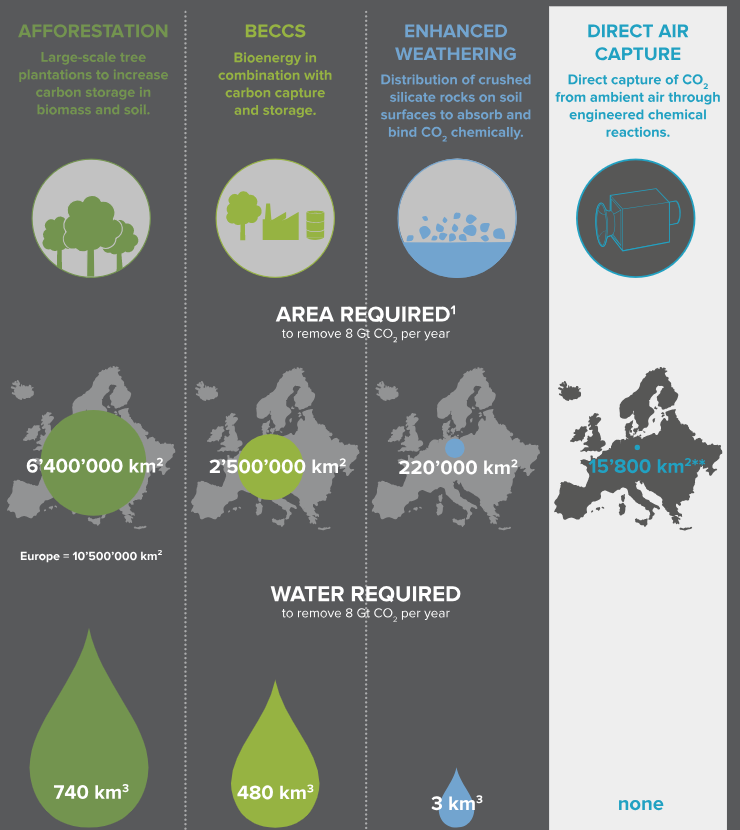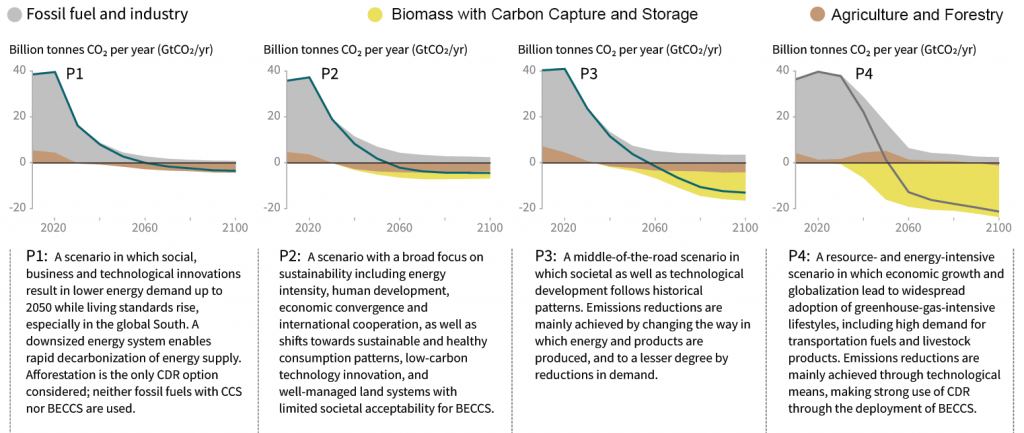
More than a cut, we need negative emissions
*Photo by Gaia Squarci. All rights reserved. A thick forest on volcano Mauna Loa. Hawaii, Big Island. United States. June 14, 2015
–
Remember the big fuss a few months ago when the new US democrat rising star Alexandria Ocasio-Cortez has been badly criticized for her statement about “the world ending in 12 years” (if we don’t act on climate change)?
That was actually a little bit of an overstatement, but it was based on the headlines of authoritative press such as the Guardian, the Washington Post, and the BBC. Those were grounded on the last report by the IPCC, the panel of top world climate scientists which recently analyzed what was necessary not to exceed the threshold of 1.5°C of warming, and what might be the consequences of doing so.
This is actually the temperature rise after which we’d transition into an unknown territory for many ecosystems sustaining life on our planet, and after which the world as we know it might come to an end. And to be even more precise, 12 years is the time we have to be halfway to net zero emissions if we want to avoid exceeding the 1.5°C threshold.
Instead of focusing on this somehow arbitrary frame (actually promoted by the IPCC itself) the real take-home message of this report should have been: almost none of the future scenarios considered by the IPCC could stay below 1.5°C without overshooting and negative emissions. Let me explain.
This means that we are so late in tackling GHG emissions, that we cannot achieve the set emissions’ objective without exceeding it first. We will then have to suck CO₂ out of the atmosphere to then return afterwards below the set target. In the climate change community jargon, these are named negative emissions, because instead of releasing gas into the atmosphere, you are actually removing it.
Most of the available techniques aimed at achieving those negative emissions are still in very experimental stages, but again, the scenarios forecasted by the IPCC heavily rely on them to achieve the set climate targets, as you can easily see in the image below, taken from this IPCC report. The green line are the net emissions, meaning the balance between the usual emissions (above 0) and the negative emissions (below the 0 line).
To make sense of the real potential of each technique indicated below, keep in mind that today the world’s entire population emits roughly 40 Giga Tons of CO₂ per year.
As all plants naturally absorb CO₂ and store it in their biomass, thanks to photosynthesis, a range of techniques rely on this capability of plants to remove the gas from the atmosphere. Planting trees is the first and most obvious way of obtaining negative emissions. The process, if compared to others, is not very costly nor very efficient, but at least we know it well and there are no expected major negative side effects, attached to a range of positive effects. This option could allow us to remove up to 3.6 Giga Tons of CO₂ per year from the atmosphere, but the area required for planting would be huge, subtracting vital land needed for food production, for instance. The technique called Biomass with Carbon Capture and Storage also means growing crops, but to use them as fuels this time, to then capture the emissions generated and store them underground, in old oil reservoirs. This option could allow us to remove up to 5 Giga Tons of CO₂ per year, but the feasibility on a large scale has still to be proven yet, with the usual caveats in terms of water consumption and land occupation. Soil carbon sequestration would still be achieved through plants which capture CO₂ and then store it into the soil thanks to the growth and death of their roots, and the transfer of carbon-enriched compounds from roots to soil microbes. This option could allow us to capture up to 2 Giga Tons of CO₂ per year, with several positive co-benefits on soil fertility.
Also most minerals react with acidic rain, mineralisingCO₂ and fixing it in chemical compounds. We could boost this the natural phenomenon by performing Enhanced weathering. The Carbon fixing can be enhanced by distributing grounded rock material over land, shore line or the open ocean, with a potential uptake around 3 Giga Tons of CO₂ per year.
The last naturally occurring phenomenon we could boost to remove CO₂ from the air would be phytoplankton metabolism. We could in fact proceed to massive Ocean fertilization, dropping nutrients in waters to enhance its biological production and thus capture more CO₂ thanks to phytoplankton. But this technique, even if was proved feasible, would have heavy side-effects for the whole marine environment.
Lastly, Direct air CO₂ capture is very promising but is still at an infantry stage, as costs are very high and the process requires a lot of energy, which could be somewhat of a paradox. Estimates of potential world uptakes are not available, but still, have a look at this Swiss company Climeworks who is trying to be a game changer of our climate crisis. The infographic below is taken from their website and summarizes the land and water requirements of different techniques to remove 8 Giga Tons of CO₂ per year.

To not exceed 1.5°C we would need to deploy almost all of these techniques, but this appears actually unrealistic as some of them are competing with others, for instance for the use of land or water. Still, we have the theoretical possibility of implementing Solar Radiation Management – meaning beaming back in space some of the sun radiations – to buy us some time, but these techniques are highly controversial because of the myriad of side effects they could bring along. It is more likely that we will actually exceed the 1.5°C threshold as well as the 2°C one.
Consider that we have already reached today almost 1°C of warming, and that the climate system has a strong inertia. Even if we stopped today to emit CO₂, shutting down all of our fossil fuel plants instantly, the planet would still warm for decades, heating up of approximately 1°C more. So, we still would need negative emissions, but it’s likely not going to be enough to keep warming at safe levels. What we really need is a technological breakthrough.

